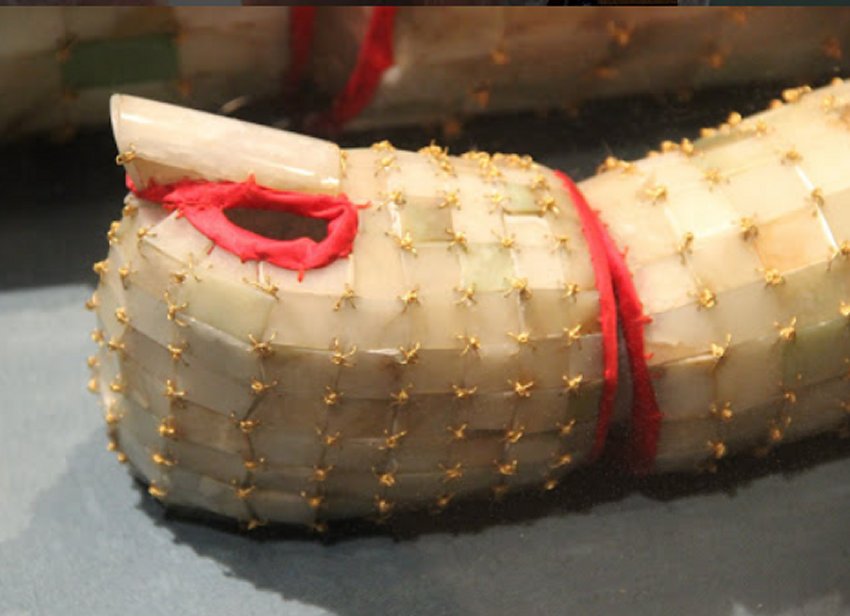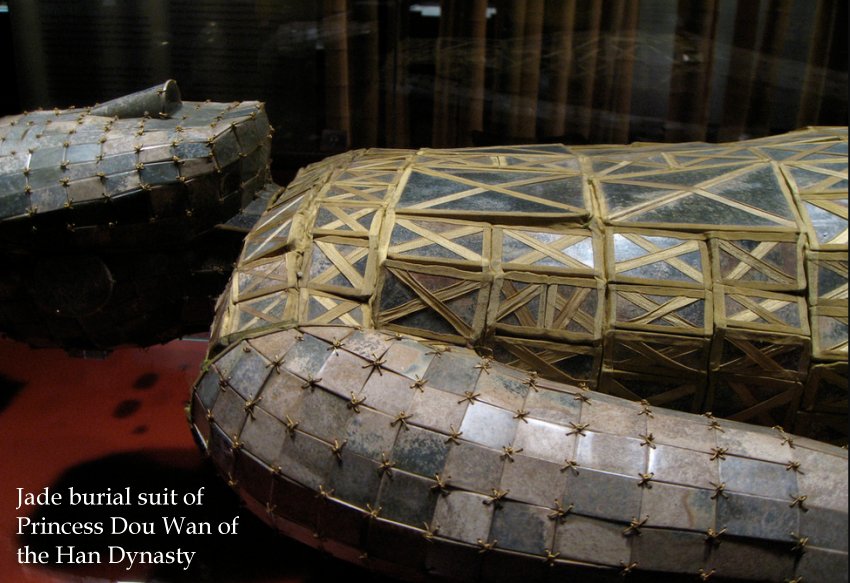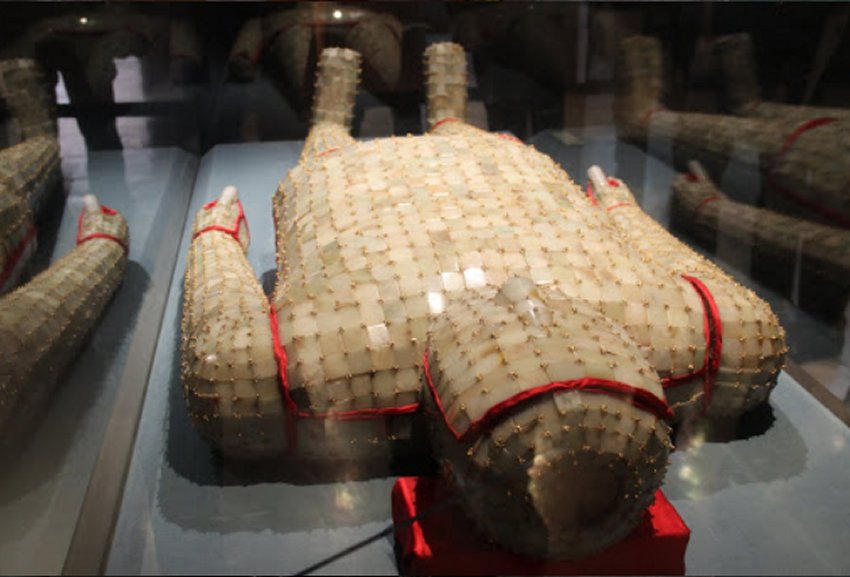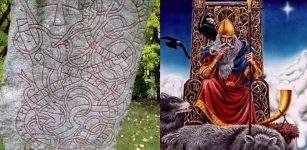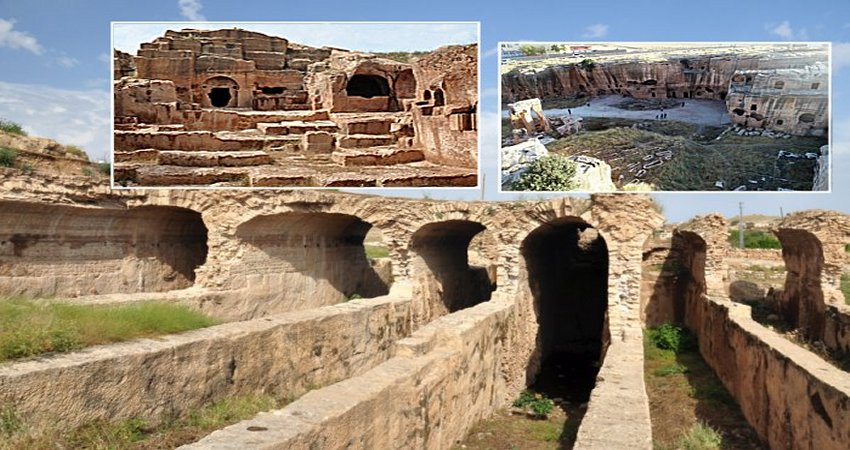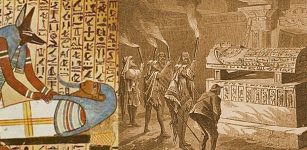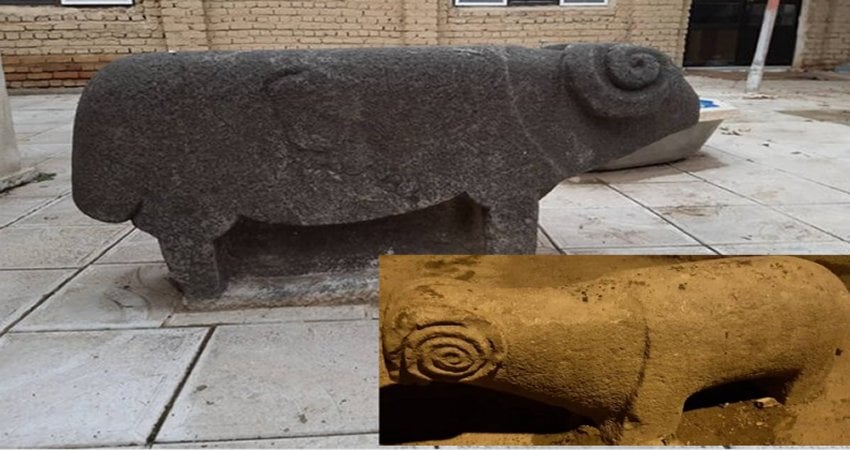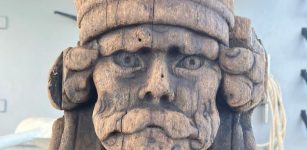Precious Ancient Chinese Immortality Suits Made Of Jade
MessageToEagle.com – Jade suits were first documented in literature around AD 320, although there is archaeological proof of their existence over half a millennium before.
During the Han Dynasty (206 BC – 220 CE), members of imperial family were buried in jade burial suits, according to ancient texts.
Jade was believed to possess magical properties that would protect the body from decay and ward off evil spirits. Attempts to preserve the body reflect the belief that the earthly aspect of the soul continues to dwell in the body after death.
First, jade materials transported from far-away places were processed into thousands of small jade pieces of certain shapes and sizes. Secondly, each jade piece was polished and drilled, with the shapes and sizes of the holes undergoing special scrutiny; thirdly, a lot of specially made gold, silver or copper threads were used to join the jade pieces.
According to the ‘Book of Later Han’, the type of threads used depended on the social status of the person buried. The jade burial suits of emperors used gold thread; princes, princesses, dukes, and marquises, silver thread; sons or daughters of those given silver thread, copper thread; and lesser aristocrats, silk thread, with all others being forbidden to be buried in jade burial suits.
The making of a jade burial suit was not easy, because its hand-making process is complicated and sophisticated.
The most beautiful of the suits can be seen in Xuzhou, a city little known in the Western world, but during the early Han Dynasty, Xuzhou was one of the most important regions of China.
Liu Sheng’s jade suit was made of 2498 pieces of jade, sewn together with 1.1 kilograms of gold thread, (Dou Wan’s was smaller). Each suit consists of 12 sections: face, head, front, and back parts of tunic, arms, gloves, leggings, and feet.
It has been estimated that a suit such as Liu Sheng’s would have taken ten years to fashion. Along with the jade suits, Liu Sheng and Dou Wan each had a gilt bronze headrest inlaid with jade and held jade crescents in their hands.
After, the Han Dunasty, the jade burial suit practice was forbidden in 222 and gradually disappeared.
© MessageToEagle.com


